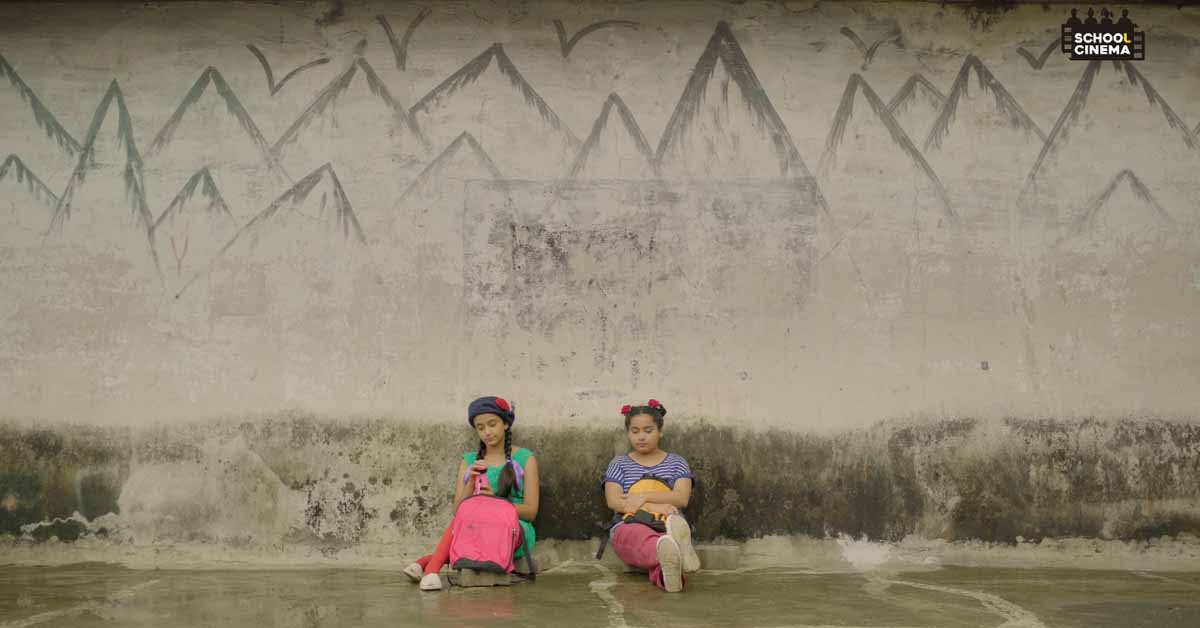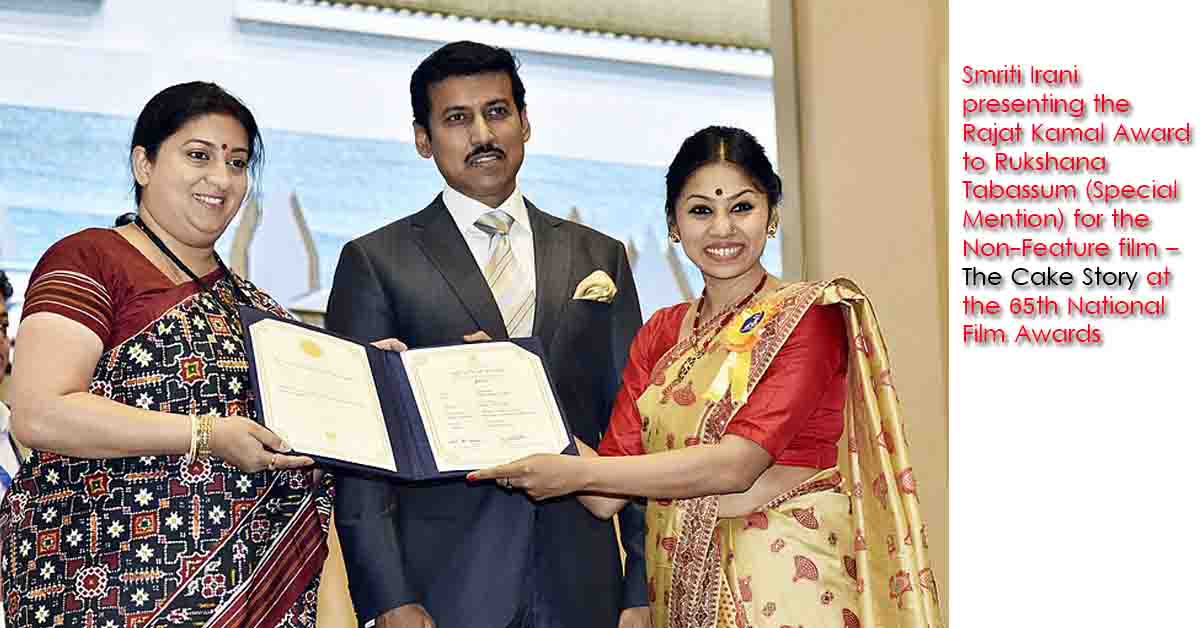
The short film Apples And Oranges (2019), directed by Rukshana Tabassum, won the National Award for the Best Educational Film at the National Film Awards, 2019, in the non-feature category
Born in the Nagaon district of Assam, Rukshana Tabassum is an alumnus of the Film and Television Institute of India (FTII)- the place where she learned the nitty-gritty of direction. She did a course on TV Direction from the institute.
Apart from being a passionate director, Rukshana is also a prolific Bharatanatyam dancer and painter.
Her short film- Apples And Oranges (2019) won the National Award for the Best Educational Film at the National Film Awards, 2019, in the non-feature category.
Her previous short film The Cake Story (2017) also won a Special Mention in the same category of the National Film Awards in 2018.
She has also acted in Ketaki Narayan’s 2018 short film Burning, which has been screened at several film festivals around the world.
Her non-fiction work The Social Solution (2021) is about a bunch of young techies and their start-up venture. Both the short film and the documentary are available on YouTube.
In conversation with Dipankar Sarkar for The Story Mug, Rukshana Tabassum delves deeper into her latest work.
Dipankar: How did the Apples And Oranges genesis come about?
Rukshana Tabassum: I was depressed by the increasing community intolerance and the rise of hate crimes in the country. And I wondered why we cannot be more tolerant of others and respect the choices and opinions of each other.
I started venting my grief and anger on social media platforms where I spent considerable time arguing with friends and strangers.
And what made it worse was the amount of fake news that was getting shared widely on these platforms that were making people react. I even unfriended a couple of people from my friend list due to our difference in opinions until one day I realised I was becoming one intolerant person myself.
However, as some sense dawned on me I started reading about how the social platforms study user behaviour and can manipulate the way we think by pushing the type of narrative they want to and cause extreme polarisation.
I also realised how most of us didn’t have any idea about the way these platforms functioned and used our data. And this is when I tried to change the ways I used social media myself.
I started to do more research every time I came across any news that tickled my mind to form an immediate opinion. Instead of reacting my approach towards any news became more of understanding the issue from multiple perspectives with an open mind.
And it was in 2018, LXL Ideas got in touch with me to make a film on overcoming differences for children. And the process of writing this film became a wonderful tool for me to seek the answers I was looking for.
Dipankar: Why did you decide to set up the story in a fantastical land called ‘Fruitistan’?
Rukshana: Because the problem we were addressing was universal and I didn’t want to limit its reach. And I chose to use ‘food’ as the major component of the narrative because every time someone got lynched in the country cause of his or her ‘choice of food’ the world stopped making sense to me.
Dipankar: What is the significance of the scene where we find that Tulip is locked in the room of an old unoccupied building and Daisy rescues her.
Rukshana: I have often wondered how humans come together to help each other when natural calamities befall us. How do we manage to shed off the burden of the different identities that we carry with us at such time and the identities that creates the concept of ‘Us’ and ‘Them’?
I have often wondered if the true nature of a human being is to be kind and gentle to each other. If so then what makes us judgemental and prejudiced? Is it due to the various kinds of conditioning that we are exposed to for years?
In the scene where Tulip is locked and Daisy gets to know there is someone who needs her help, her first instinct is to go and help her. She does not think whether the human being, who needs her help belongs to her community or not.
Dipankar: The protagonists meet in isolated and abandoned spaces, amidst natural surroundings. But when they are shown in their homes, it is brightly coloured. Why this contrast?
Rukshana Tabassum: Nature was always a part of the narrative so we knew the film will have a lot of greens and we were lucky that we shot the film during the middle of monsoons. We managed to capture different hues of green.
So while deciding on the look of the film our approach was mainly to create two very distinct characters out of the two protagonists in the film. Sapna Chandra (production designer), suggested we should go with pastels for Daisy and a vibrant palette for Tulip.
If you notice Daisy’s s room is painted in a soft blue and Tulip’s room is done in vibrant pink.
Similarly, the choice of colour for their costumes was based on this as well. While Daisy wears soothing pinks, mauve, and lavender Tulip is dressed in vibrant pinks, yellows, and blues.

Dipankar: Certain scenes in the film are filled with individual drawings, artworks paintings, and illustrations. What kind of colour space did you have in mind for the film?
Rukshana: The drawings and artworks were done in pastels. We used pastels for Daisy’s character and went with colours like soothing pink, mauve, lavender, etc. And for Tulip’s character, we went with more vibrant colours like hot pink, blue, yellow. Overall we wanted the film to look bright and joyful.
Dipankar: Did you have any references regarding the look of the film?
Rukshana: While writing the film my biggest worry was how would we create a fantastical world with the budget that we were working with.
Although I was fantasising about the film in the very ‘Wes Anderson’ style I dared not to open my mouth cause I didn’t want to end up in an ‘Expectations Vs Reality’ meme.
I remember I had shared a very early draft of the script with my cinematographer Shreya Gupta and she had called me after reading it and was quite excited. And when she described the way she was seeing the film – bright colours rich hues, graphical frames. I knew we were on the same page.
Now, the challenge was how would we achieve it. But soon our problems were taken care of when my friend Sapna Chandra (Production designer) and Shilpi Agarwal (Costume designer) came on board.
We all were trying to create something quirky, bright, and happy that would appeal to the kids. Some of the films that were our reference for the look were Mary Poppins (1964) and Moonrise Kingdom (2012).
Dipankar: Are you currently planning of making a feature film?
Rukshana Tabassum: Yes, finally I have identified a story, which I would like to make into a feature film.
My friend has written the story and we are working on the screenplay currently. It’s a socio-political drama set in a small town in Assam.

ALSO READ | Rajni Basumatary: Graph Of Regional Films Is Cyclical
Dipankar Sarkar is a film critic who contributes to different publications- both national and international. He is a Research Fellowship from the NFAI, Pune, India, and was one of the panelists for the selection of world cinema at the 27th International Film Festival of Kerala in 2022.